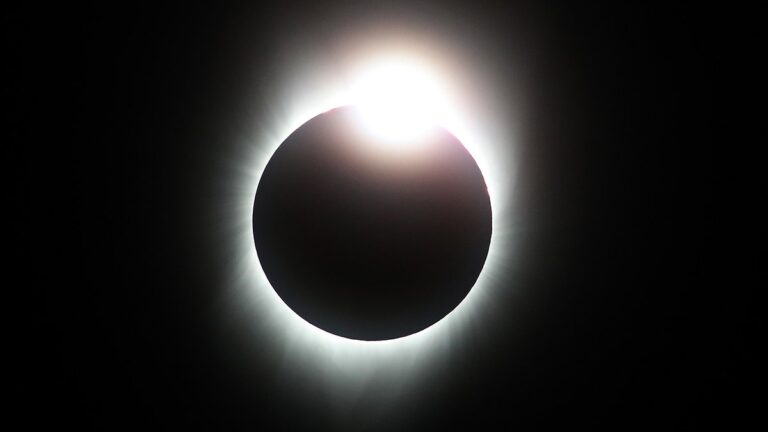The next solar eclipse is just over two months away, with skies expected to darken across much of the US for a few minutes on April 8.
The eclipse marks the first eclipse visible in the contiguous US since August 2017, when millions traveled to the path of totality to get an optimal view of one of nature's most incredible events.
This time around 2024, many cities in the Midwest will have a long view of the phenomenon, with a total track stretching from western Mexico northeast to Newfoundland and Labrador in Canada.
As for the US, the path of totality stretches from southwest Texas to northern Maine, with many major metropolitan areas getting the best possible view of the eclipse.
Down in Texas, the San Antonio, Austin and Dallas-Fort Worth areas are all in the path of totality, while the Little Rock area in Arkansas will also have fantastic views.
Much of the path of totality lies in the American Midwest, with several notable cities getting several minutes of prime viewing time for the upcoming eclipse.
Here's a look at Midwestern cities with notable time in the path of totality, according to the National Solar Observatory and Eclipse2024.org:
- Carbondale, Ill. – Four minutes, nine seconds
- Cape Girardeau, Mo. – Four minutes, five seconds
- Poplar Bluff, Mo. – Four minutes, eight seconds
- Jackson, Mo. – Four minutes, 10 seconds
- Evansville, Ind. – Three minutes, two seconds
- Indianapolis, Ind. – Three minutes, 48 seconds
- Bloomington, Ind. – Four minutes, two seconds
- Vincennes, Ind. – Four minutes, five seconds
- Dayton, Ohio – Two minutes, 42 seconds
- Findlay, Ohio – Three minutes, 44 seconds
- Cleveland, Ohio – Three minutes, 49 seconds
- Tiffin, Ohio – Three minutes, 52 seconds
- Norwalk, Ohio – Three minutes, 54 seconds
- Upper Sandusky, Ohio – Three minutes, 55 seconds
- Forest, Ohio – Three minutes, 56 seconds
While the path of totality won't pass through Chicago, the Chicago White Sox will be in the spotlight on April 8 as are scheduled to play the Cleveland Guardians in Cleveland, with the game's start time still unknown.
For those who can't get a peak of this year's solar eclipse, it will be a while before they can see another one in America.
According to NASA, North America's next total solar eclipse will occur in March 2033, but it will only hit Alaska in its entirety.
Eclipse on August 12, 2045 will hit areas of the West and the Great Plains in totality, with other total eclipses visible in North America in 2052, 2078 and 2079.
There will be another total eclipse visible in Chicago this century, but it won't happen before September 14, 2099, according to NASA. This eclipse will reach totality in the far northeast corner of Illinois, including Evanston and Chicago, according to officials.

